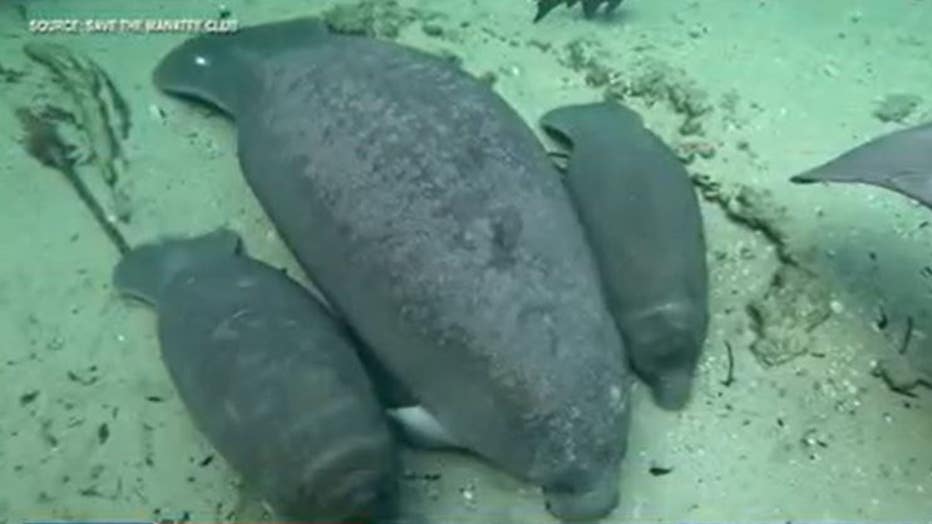Florida reporting fewer manatees are dying of starvation this year
Manatees feel impacts of cold water
It has already been a tough winter for manatees along Florida's west coast. In the last two weeks alone, the Manatee Critical Care Center at ZooTampa saw nearly half the amount of sea cows it sees in an entire year.
TAMPA, Fla. - This time last year, nearly 400 manatee deaths were reported in Florida. So far in 2023, the state is reporting 140 deaths.
After two winters of Florida Fish and Wildlife's feeding program, the latest statistics are a hopeful sign that maybe the rare die-off of the beloved sea cows could be slowing down.

MORE: Adorable! Rare manatee twins found at Blue Spring State Park in Florida
In 2021, 1,100 manatee deaths were reported. It was roughly double the average annual number of manatee deaths in previous years. Last year, that figure was 800.
The majority of deaths occurred on the east coast of the state, specifically the Indian River Lagoon, where harmful algae blooms killed at least 95% of its seagrass – a vital food source for manatees. The U.S. Fish and Wildlife Service along with FWC approved a joint plan allowing for the supplemental feeding of malnourished manatees in that area.
During the 2021-2022 winter, 202,000 pounds of lettuce were fed to manatees, with nearly $117,000 spent on the project. Wildlife officials say the public should not feed manatees. They approved the program for a second time in December and implemented a no-entry zone in Brevard County where manatees gather for the winter.
This year, the Florida counties with the most manatee deaths are:
- Lee County: 33
- Hillsborough County: 13
- Brevard County: 12
- Citrus County: 12
- Charlotte County: 8
- Broward County: 7
- Pinellas County: 7
- Collier County: 5
- Levy County: 5
- Manatee County: 5
The majority of the deaths were due to natural causes, cold stress, perinatal reasons, or watercraft collisions. Nearly 70 manatee necropsies haven't been completed yet.
Red tide is also a concern for the Florida manatees. As the Gulf coast experiences high red tide concentrations, some manatees have been showing signs of exposure. Within two days, three manatees were rescued earlier this week.
The Florida manatee primarily consumes aquatic vegetation, and if a red tide bloom has been around for a while, it can lead to poisoning.
"Epiphytes, such as small crustaceans and barnacles, grow on seagrass blades and feed by filtering out particles from the surrounding waters," according to the University of Florida. "During persistent red tide blooms, epiphytes remove large amounts of red tide cells from the water and concentrate the toxin-producing algae in their gut. These toxins, while not harmful to the epiphytes, can poison manatees when they consume the seagrass."
Between September 2017 and October 2018, nearly 200 manatees were killed along parts of the Gulf coast due to a more than year-long red tide bloom, reports UF.

